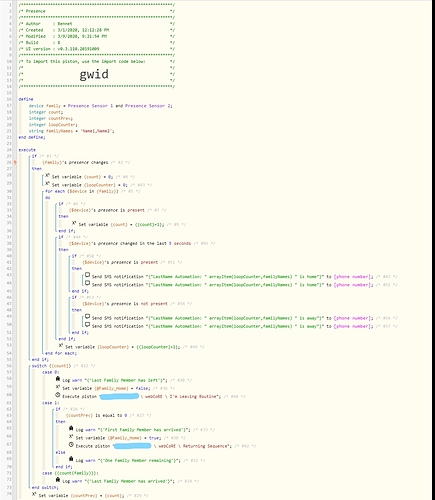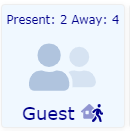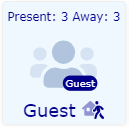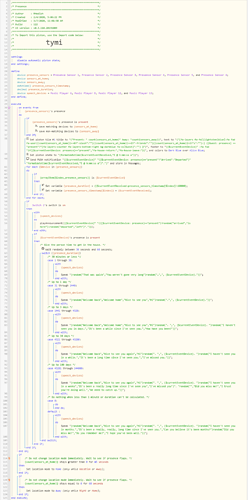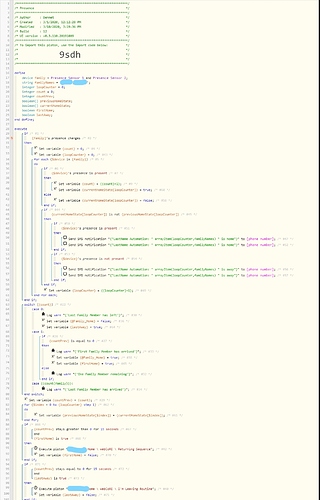1) Give a description of the problem
I am trying to create a piston for presence that uses a array of global variables. However the problem is that I don’t thing that such an array type exists. I attempted to use an array of boolean’s set to the global variables, but that removes my trigger conditions if anything changes. I would be interested in any more elegant solutions (trying to make it simple for updates and such and robust such it does not fail to detect presence changes much).
2) What is the expected behaviour?
I am trying to create a piston that does the following:
- Can use an array of global variables to track presence
- I have independent pistons for each memeber that has a “debuffer” attached to ensure the phone is really away or home (makes sure the presence did not toggle within the last 3 minutes before setting to a new state) and sets the value to a global variable
- I have an independent global variable for guests that is set via IFTTT
- If someone arrives or leaves home I would like a SMS message sent out (I can do this from the independent pistons if needed
- If someone arrives home first then a “return home” piston is called
- If someone is the last to leave then a “leaving home” piston is called
3) What is happening/not happening?
N/A - I don’t have the piston fully coded due to lack of knowledge
4) Post a Green Snapshot of the piston![]()

